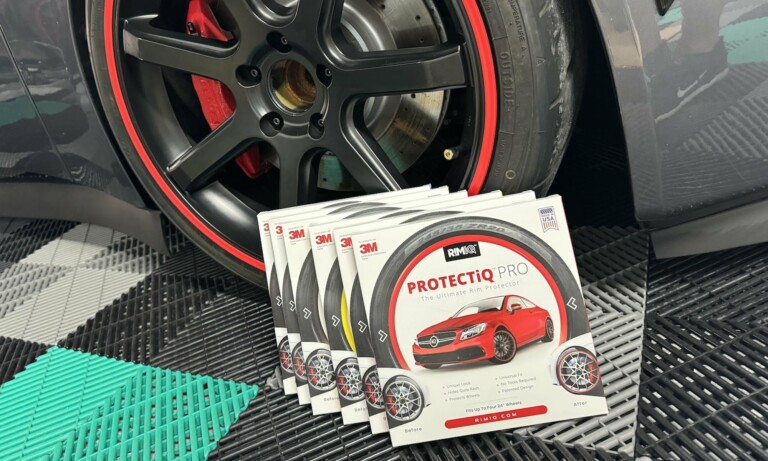Ultimate eCommerce checklist to boost your online sales
Setting up an online store is just clicks away in 2020. But making that store flourish on the web can take a little more than that. With online shopping being the most preferred across generations, it's become a challenge for eCommerce store owners to keep up with the pace. So, here we bring you an ultimate eCommerce checklist of all the most important tips and tricks you need to follow for boosting your sales now.

Seth Godin was 100% right when he said, “It takes six years of hard work to become an overnight success”. When you design an eCommerce store, you want to make it a long-term business. But, you can’t guarantee its success in a month or two. It’s a business that will gradually take its shape, only if you play your cards right. After working with over 5,000 eCommerce stores, we’ve managed to figure out a list of tips and tricks that can actually help you make that journey from $0 to 7 figures. That might sound like a huge deal for any new eCommerce store owner but it’s not that far-fetched if you consider the Statista worldwide eCommerce facts. In 2019, retail e-commerce sales worldwide amounted to 3.53 trillion US dollars. As a result, e-retail revenues are projected to grow to 6.54 trillion US dollars by 2022.

eCommerce Statistics Display / Credit: ProfitIndustry
How can you reach that benchmark in the shortest span of time?
If you have been following the online shopping metrics, you’ll know that people are becoming more comfortable with online purchases year after year. So, as long as you offer them a seamless shopping experience at your store, you are on the right track. But, what do you exactly mean by a seamless shopping experience?
For us, it would mean having a lot of payment options, installment options, a transparent shipping options page, a refund policy, a privacy policy, and a cookie policy in place, a credible brand, an SSL, discount options, upselling options, last-minute deals, fast support, and a well-designed page.

eCommerce Store on Mobile UX Design
In order to build that kind of a seamless shopping experience, you do need to focus on certain factors. These would include setting up your online store, optimizing the content, offering discounts, online advertisement, and so on. Based on our experience with past eCommerce clients we have had so far, we were able to compile the following list.
Ultimate eCommerce checklist
In order to make the entire process more comprehensible, we’ve divided the ultimate eCommerce checklist into different phases. Each of these phases highlights one aspect of your eCommerce store and how you should focus on building it.
Phase 1 – Optimize Your Store
1. Design a stellar landing page – A landing page if done right is a conversion machine. Almost 96% of your visitors are not willing to buy from you when they arrive at your store, according to Marketo.
2. Easy to use product catalog navigation – Your product catalog may be broad and complex, or simple and focused. In either case, it needs to be up-to-date at all times and easy to navigate.
3. Product photos matter the most – Your customers will remember 80% of what they see and a staggering 20% of what they read. Big product photos along with great web design are the two main areas you should focus on if you want to have an eye candy eCommerce site.
4. Personalized shopping – An easy way to start personalization is through localization. It’s a significant factor in satisfying the growing expectations of today’s customers and can prove even more successful if you are selling internationally. That said, it is crucial that you know where your customers are and adapt the experience—description, prices, and offerings—to their location.
5. Focus on navigation – You want to have a stress free navigation, allowing visitors to easily find what they’re looking for because if they can’t find it, they can’t buy it. Focus on drop-down menus, detailed classifications based on recent views and popular products, etc. to create a seamless navigation feature. (Extra tip: Create your navigation based on your analytics, if most of your customers buy products under XYZ category put it first on the menu).
6. Product recommendations – According to Forrester, product recommendations contribute up to 30% of eCommerce revenues. Tech giant Amazon first pioneered the concept to nudge their customers to buy more. Use related products below each product you sell or have a “more from this category” section.
7. Seamless checkout – Modern eCommerce checkout flows must enable shoppers to buy quickly and directly from your product page, without redirecting them to another site or landing page.
8. Variety of payment methods – Online payment preferences vary locally and especially globally. So you need to ensure your store has a variety of payment methods such as via credit cards, PayPal, Apple Pay, etc. to maximize customer satisfaction.
9. Email marketing – Holding on to your subscribers starting from the beginning might be a huge ask. But with tools like Sumo, you can actually start collecting sign-ups easily from the beginning. After you have enough of them, you can begin your email marketing campaigns to keep those subscribers informed about new deals, discounts, sales, etc. We recommend emailing your past customers once every week or a couple of times per month.
10. A/B testing – You have to undergo several A/B tests to design a perfect website. These would include strategizing on the placements of the different features of your website which includes – Pricing, Shipping fees (if you have them), Account creation process, Calls-to-action (CTA), Button placements and visual attributes. Numbers don’t lie, so make sure to always check your analytics and constantly conducting tests to further improve your conversion rates.

eCommerce Store Analytics / Credits: ProfitIndustry
11. Planning a customer service setup – Having a customer-service policy in place to deal with customers is imperative for keeping your customers happy and avoiding negative online reviews. You can either do this with a chat app such as Intercom or use social media channels like Twitter to handle customer issues and complaints.
12. Being tax covered – Governments are taking notice that about $23 billion in annual tax revenue is going uncollected through eCommerce channels – making global tax management and compliance that much more complicated. Tax laws differ widely nationally, and especially internationally, so it can be difficult and time-consuming to manage these requirements and be compliant. Ensuring the tools and strategies you’re using can handle this for you will save for a lot of time and mistakes made down the line.
13. Billing and Invoicing – You provide multiple payment options for your customers, which makes it even more difficult to manage payment frauds or refunds. Having a modern billing and invoicing system will keep your system in place and avoid hassles in the long run. We recommend checking out Sygnified.
14. Think mobile-first – By 2021, 54% of all eCommerce sales in the US is expected to take place on mobile. That’s huge. It also means that you should absolutely put together your eCommerce site with mobile in mind. In other words, you shouldn’t just create a responsive site that looks okay on mobile, but rather design it for mobile.
15. Build a PWA for your eCommerce store – Google first introduced the concept of a Progressive Web App (PWA) in 2015 with the intention of making the mobile user experience more pleasant. Today, an impressive 80% of e-commerce consumers use their smartphones to browse through the store, look up reviews, and find better deals. (OuterBox). A PWA eliminates the hassle of downloading an app, offers a better loading experience, and sends push notifications on the device even when the web app is not running. Speaking from a ranking perspective, a PWA is also discoverable by search engines.
16. Don’t forget the About Us page – Your About Us page is a window into your business and you want it to be appealing and fresh. Around 7% of visitors coming to a home page click to see the About page. Those who see it convert 30% more than those who don’t visit it and spend on average 22.5% more. This alone should be enough to get you started drafting this page!
17. Focus on the security of your website – “Secure shopping-cart systems are essential for maintaining the integrity of the payment process” – Ella Nevill. These techniques will reduce the risk of online fraud: Picking a secure platform, Using strong SSL authentication, Tracking all your orders, Asking for strong passwords, and Running PCI tests.
Phase 2 – SEO
1. Implement SEO basics – In order to ensure you are getting traffic from your target audience, following the basic SEO best practices is a must. To begin with, you have to build your website around the keywords you want to use. Then you need to ensure your site is fully indexable by the search engines such as Google and Bing, create your WebMaster Tools Account on both search engines and verify your site.
2. Internal and External links – For any SEO strategy to work, you need to give it a certain frame of time. This could be anytime between 3-12 months for your SEO to start bringing good results. This is why you need to begin using internal and external links for your keywords right from the start. This could be via product listings, blog posts, FAQs, and so on.
3. Focus on transactional keywords – Transactional keywords are the words and phrases that users type into a search engine when they’re ready to buy. One of the most effective ways to boost your SEO is to include relevant keywords in your website copy, blog content, product descriptions, etc. As an e-commerce store, your goal is to make sales, so you’ll want to put a strong focus on transactional keywords.
4. Competitor research – Use tools like SEMrush to study the keywords on which your competitors are ranking for. Optimize your website content, distribute backlinks and ensure you list your business on relevant directories and forums using location or product/service as the main keyword.
5. Avoid duplicate content – Archives, tags, incorrect pagination, and even basic product filtering generate duplicate content and drag your site down. Use your robots.txt and block them for being indexed, along with any other features that create duplicate content.
6. Optimize the product page – This means using keywords but not to the extent where you end up overstuffing your content. Relevant product keywords in your headers and image alt tags should be enough to help your rankings.

eCommerce Page Layout
7. Write unique product descriptions – Writing unique product description instead of using the one provided by the manufacturer is the smart way to go, as Google will set you apart from your competitors who use the same product text.
8. Keep pages with out of stock items – Don’t delete these pages, especially if you rank high with them; instead, show related products or your newest version.
9. Link to other sites – Despite random rumors you might have heard, linking won’t ruin your rankings. Instead, it will show the visitors that you want to provide helpful content and you don’t mind linking to those sources. This will paint you as genuine and reliable.
10. Have a well-thought-of internal linking system – This will reduce your bounce rates as people have something to click on. Recent studies show that 69% of people base their browsing on these links. Don’t overcomplicate it, try to think from your visitor’s point of view. What would be relevant to them?
Phase 3 – Marketing and Advertisement
1. Retargeted Ads – Simply capturing email addresses won’t work for your store in the long run. You need to engage them with autoresponder campaigns via email as well as social media ads with personalized messages based on subscribers’ actions (such as leaving items in the shopping cart or visiting specific product pages).
2. Google Shopping Setup – While you’re waiting for SEO to drive results, you can always get your products displayed in the search results with paid Google Shopping ads. This constitutes being a high-value traffic source.
3. Set up a Facebook Product Catalog – Once your product catalog is set up, you’ll be able to take advantage of Facebook’s dynamic product ads. These have been renowned for increasing click-through rates compared to other ad types.
4. Use popular social media channels – Social media is big and every eCommerce site should have a short term and long term strategy to gain more popularity on social networks. The two big names (Instagram and Pinterest) and they are a must. Set your profiles and be as active as possible, without spamming your fans. You can also use the dedicated shopping features on these platforms to enable direct purchases for your followers from the social media app.

Social Media Statistics Around eCommerce / Credits: ProfitIndustry
5. Connect with Influencers – When it comes to an online store, you need to figure out ways to market it via influencer marketing. Platforms like Pitchbox can help.
6. Sign up for Help a Reporter Out (HARO) – This platform will let you respond to requests from journalists for quotes that could earn a link back to your website. Not to mention, it will also provide exposure to your company and bring new visitors to your site.
7. Create a viral loop – The strength of viral referral programs is not unknown anymore, thanks to big-time successes like Uber and Dropbox. You can also find your own loop and use it to drive revenue growth through your current customers.
8. Inspire user-generated content – UGC campaigns amplify your brand’s messaging without extensive investment on your part.
9. Design a push notification strategy – Push notifications are ruling the digital landscape for three years. Since 70% of consumers find all types of push notifications to be valuable, it is no wonder push is considered an integral part of the marketing strategy across industries.
10. Create a blog – It isn’t surprising to see blogging has become a common practice for any business. In fact, it is an effective tool for e-commerce stores to inform, educate and nurture customers. Post new content weekly and send an email blast to your entire customer base.
11. Post-purchase automation – Using a tool like ActiveCampaign, for example, you can set up things like trigger campaigns from actions, sales follow-ups and birthday emails, which provide personalized offers, money-off vouchers, suggested next purchases and many other options, all based on the user’s behavior.
12. Offering discounts – Pricing is tricky. You have to offer a lower price than your competition while maintaining a decent profit margin. If it’s a one of a kind product, you don’t need to offer a massive discount. However, with conventional products having enough competition, you can always go for discounts to make your store stand out.
13. Set up affiliate marketing – Affiliate marketing can generate up to 90% of the total revenue, these numbers varying depending on the niche and number of affiliates. Setting up your own affiliate program or using networks like Commission Junction or Shareasale, to name just two, can be challenging, but it can generate a lot of revenue.
Phase 4 – Shipping and Logistics
1. Stop fulfilling your orders by yourself – A fulfillment service is a company that stores your product (some of you may already be familiar with Amazon Fulfillment). Once a customer places an order, a fulfillment company does all the work he or she normally does sitting at the kitchen table and driving to the UPS store. A fulfillment service is mandatory if you plan on scaling-up your sales in eCommerce.
2. Set strict reorder points – Assure that each product in your store indicates the exact moment you will need to order new stock. To do so, take into account the typical lead time of getting a new purchase order to your fulfillment center, booked in and ready for sale. And make sure you don’t eat into the emergency safety stock you’ve already reserved for sudden changes in demand.
3. Run tests to gauge product interest – If you are uncertain how popular your product will be, or you just want to get an idea of how popular it will be so that you can plan ahead your inventory, a simple solution is to create an MVP landing page to presell your items. This tactic gives you an accurate picture of how much inventory you need to have in preparation, not just for those who preordered, but also for future potential sales based on popularity.
4. Use customer data effectively – Don’t jeopardize your entire company by over-investing in the wrong assets. Use customer data to manage inventory strategically. You could do two things. The first tip would be to focus on differentiated products that have high margins, instead of commodity products with low margins. The second would be to keep your inventory levels as low as possible, while still maintaining products in stock.

eCommerce Sales Structure
5. Operationalize your data – Turn insights into processes and systems that eliminate unnecessary decision making and free up your mind and time. If you want to free up cash so you can scale, focus on turning inventory into cash faster. Think of it as your KPI for inventory turns. Find out which SKUs have a higher profit, which ones are slow-moving versus fast-moving, and which ones aren’t priced high enough.
6. Make being sold out a branding moment – When you run out of stock, position your eCommerce brand as an exclusive company where the stock is limited. Doing so builds more scarcity into your business model, which triggers psychological buying motivation. As for communicating with customers, alert them that you’ll fulfill their order the moment inventory comes in. Another tactic is to offer discounts or coupons to apologize for the inconvenience of being out of stock.
7. Speed up post-sales customer support – Whether you personally field customer questions and complaints, or whether you have the assistance of technology, you can anticipate their needs in the event of inventory problems. Build out a folder with customer service based resources. Set aside a few hours to write email templates, emergency website copy, phone scripts, even evergreen advertising images and messaging to be used as placeholders in the event of inventory nightmares.
8. Choose vendors wisely – Always work with partners who are equipped to handle your growth. If you choose vendors that can only support you at the size you are now, or in the countries, you currently operate in, you’ll stifle yourself in the long run. For every part of your eCommerce business, from the core site to the payments platform you select, make sure that their thinking is as global, and as ambitious, as you are.
9. Shipping offers – Prioritize shipping offers based on your fulfillment status. You can go for flat free shipping or free shipping after ordering a certain value. However, if you are going for a worldwide shipping strategy, you must ensure shipping rates in different countries. Plan your strategy based on that.
Phase 5 – Growth Hacking
1. Leverage customer reviews and testimonials – According to research, 69% of online shoppers want more reviews from e-commerce sites. If you make it a priority of adding those to your site, you can easily start generating early sales from happy customers.
2. Invest in brand advocates – Once you have quite a few happy customers, recruit them. Nielsen reports that people are 4 times more likely to buy when referred by a friend. Launching a formal referral program helps you leverage this effect.
3. Reporting – Data plays a big role in the decision-making process for product expansions or reductions. It offers insights on which product is selling or not. You’ll need to can track purchases, run rates, measure accounts, and financial data in a way that provides a clear insight into the future of your business.
To scale, you need to identify which 20% of the things you’re doing and selling are producing the most of your revenue – and start letting go of time-consuming, space-filling things that don’t. It could be the way you’re promoting your products on social media that generates maximum results or a giveaway you did three months back that’s still bringing in new users. Identifying what’s working for your store and stick to that activity along with new A/B tests on the way.
As you scale your e-commerce company, challenges are inevitable. By planning for the following common issues from day one, you can mitigate their potential impact on your business. These could be the need for hiring a team or a sudden sales plateau you face in the middle of your sales funnel. Scaling your eCommerce store is a long-term process where data and feedback is king. To keep all of these tips handy, make sure to download the ultimate eCommerce checklist below.
Download the checklist in PDF format here
















